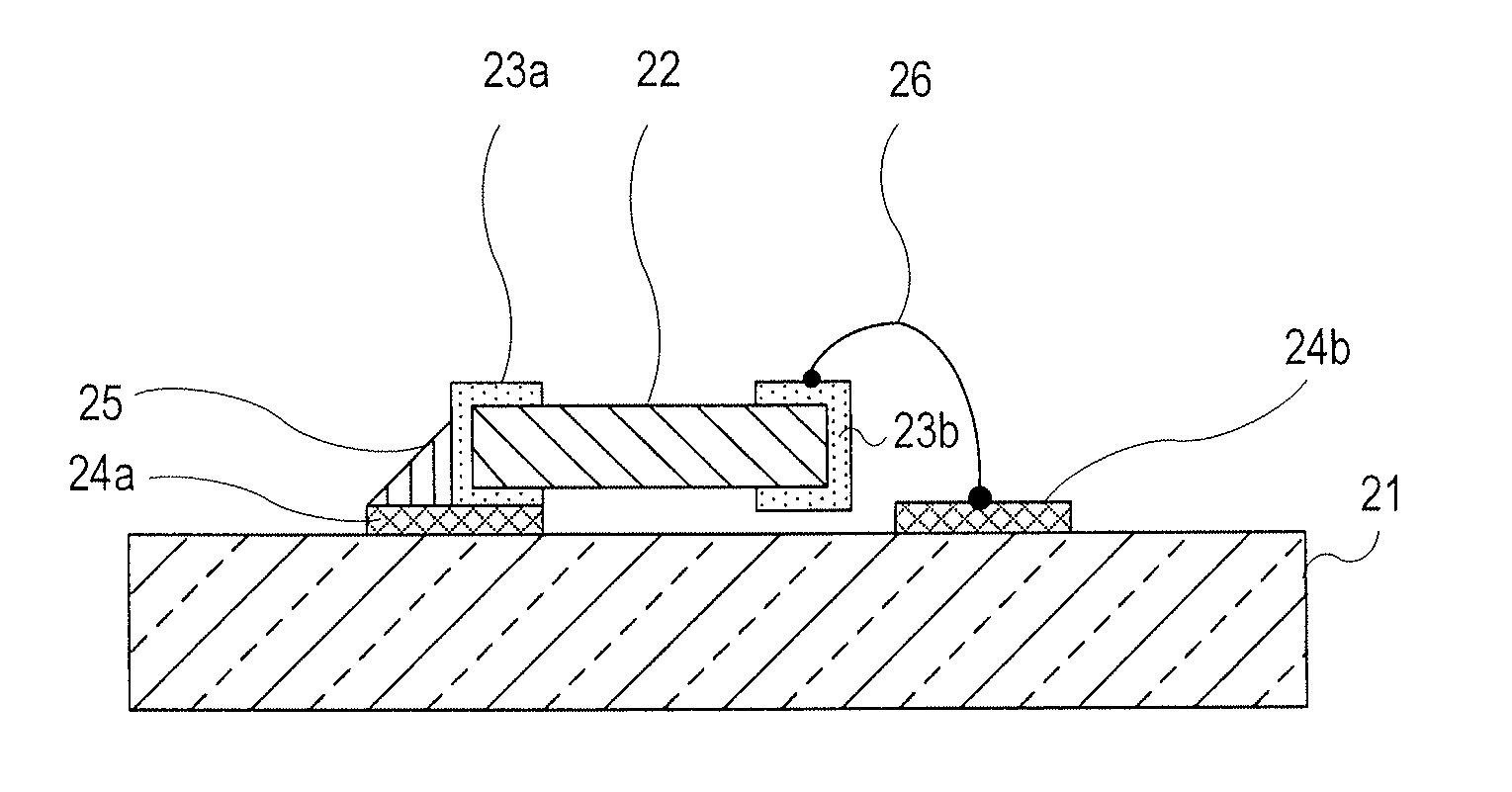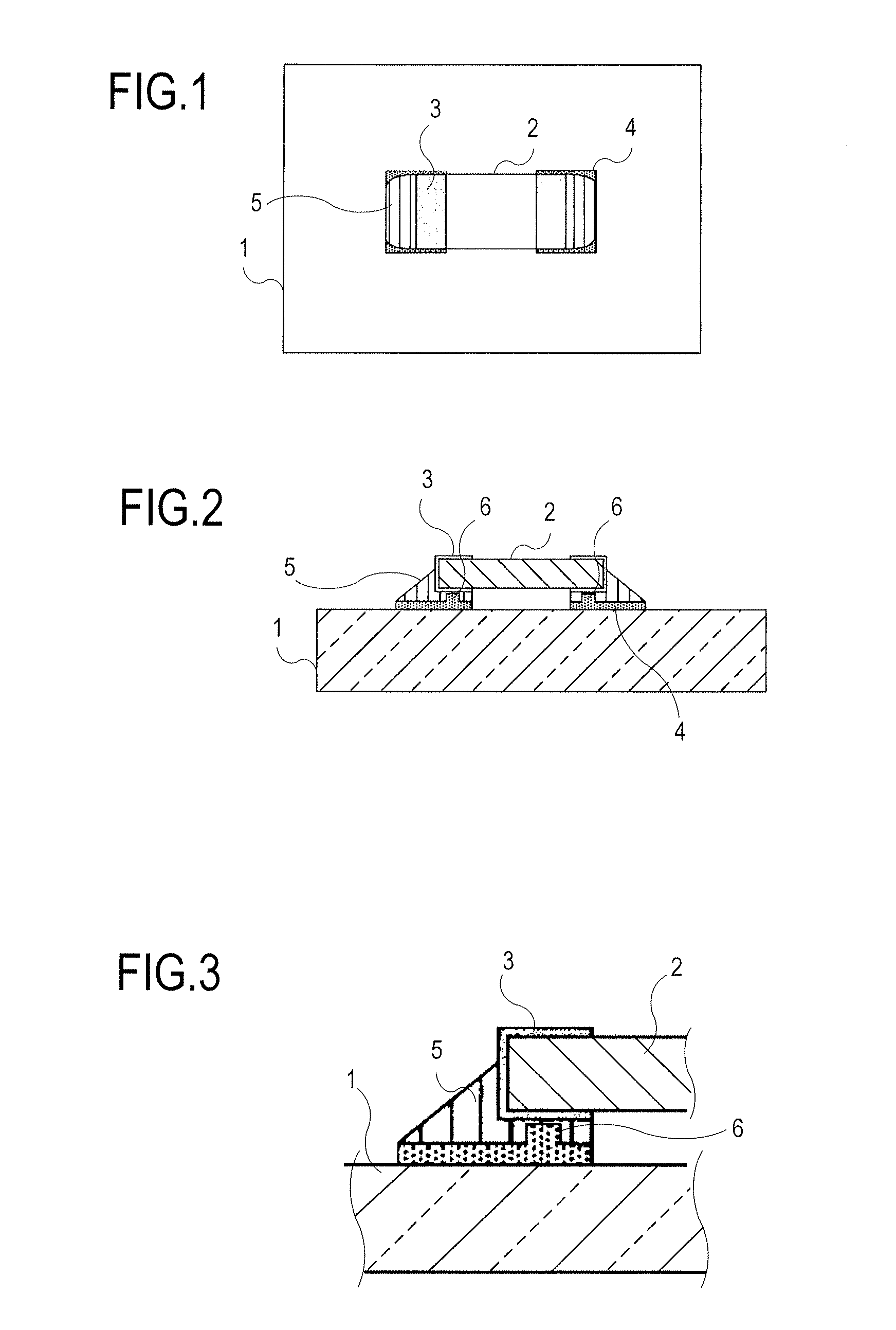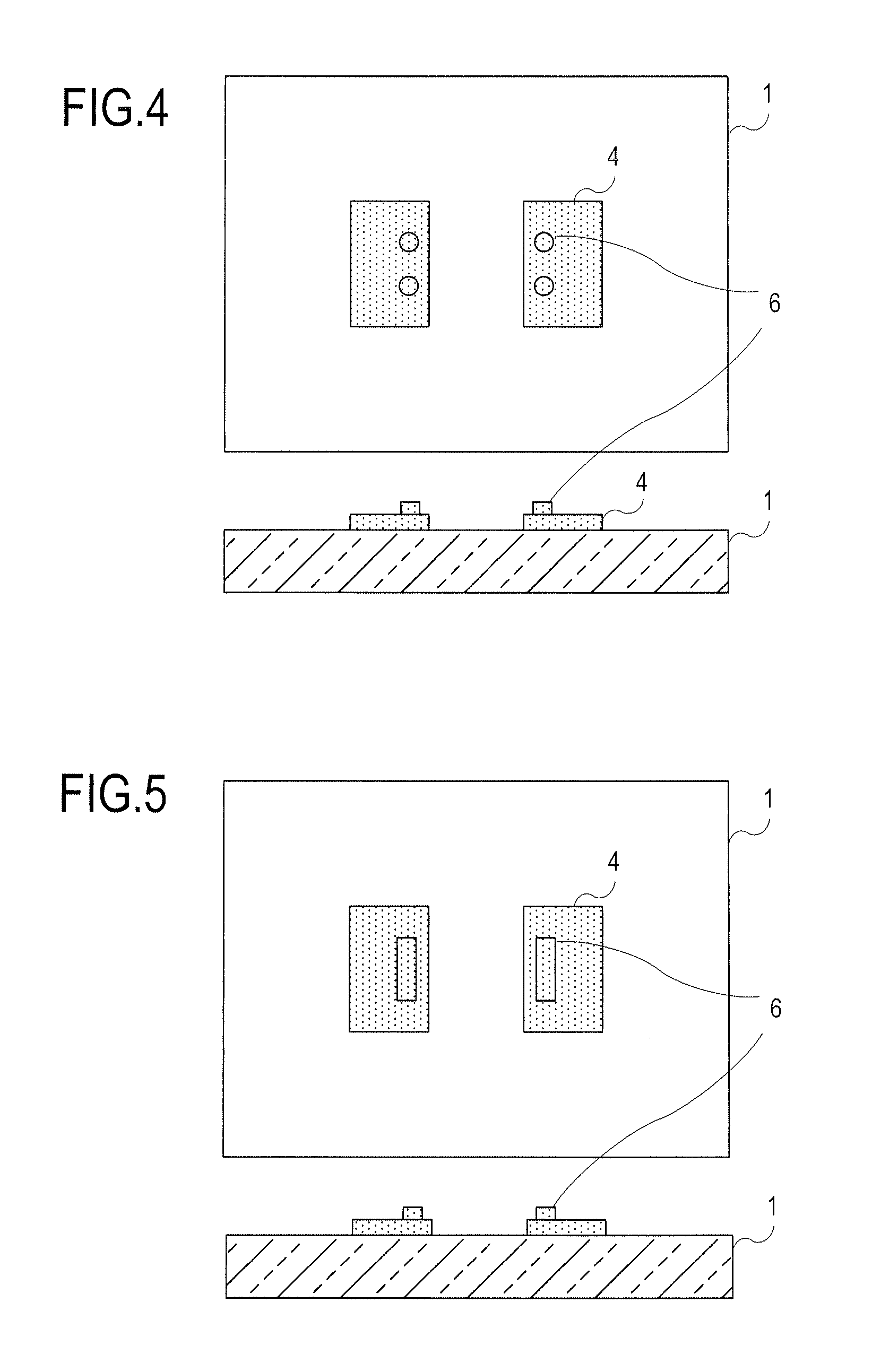Oscillator
a technology of oscillator and solder plate, which is applied in the field of oscillator, can solve the problems of solder cracks that are more likely to occur in large components than in small components, and certain circuit components cannot be reduced in size, so as to achieve simple structure, reduce solder cracks, and reduce the effect of cos
- Summary
- Abstract
- Description
- Claims
- Application Information
AI Technical Summary
Benefits of technology
Problems solved by technology
Method used
Image
Examples
application example
[Embodiment of Application Example]
[0161]An application example of the above-mentioned oscillator is described below.
[0162]In the application example, the two-terminal electrode patterns 4 on which the electronic component 2 is mounted are arranged so as to face each other in a direction same as a direction in which the glass epoxy resin board 1 has a smallest linear expansion coefficient.
[0163]In the case of a typical CEM-3 board as the board 1, the linear expansion coefficient is 25 ppm / ° C. in a longitudinal direction, 28 ppm / ° C. in a lateral direction, and 65 ppm / ° C. in a thickness direction.
[0164]In the case of a typical FR-4 board, the linear expansion coefficient is 13 ppm / ° C. in the longitudinal direction, 16 ppm / ° C. in the lateral direction, and 60 ppm / ° C. in the thickness direction.
[0165]Meanwhile, the linear expansion coefficient of ceramic (alumina) of the electronic component 2 is, for example, about 7 ppm / ° C.
[0166]Here, the long-scale direction of the board 1 is ...
PUM
| Property | Measurement | Unit |
|---|---|---|
| Expansion enthalpy | aaaaa | aaaaa |
Abstract
Description
Claims
Application Information
 Login to View More
Login to View More - R&D
- Intellectual Property
- Life Sciences
- Materials
- Tech Scout
- Unparalleled Data Quality
- Higher Quality Content
- 60% Fewer Hallucinations
Browse by: Latest US Patents, China's latest patents, Technical Efficacy Thesaurus, Application Domain, Technology Topic, Popular Technical Reports.
© 2025 PatSnap. All rights reserved.Legal|Privacy policy|Modern Slavery Act Transparency Statement|Sitemap|About US| Contact US: help@patsnap.com



